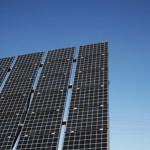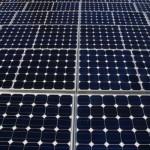US agency uses nanotechnology to increase efficiency of solar cells
The US Advanced Research Projects Agency (ARPA) is aiming to manipulate light in order to double solar power output.
 Making solar panels more efficient is by far the best way of reducing the cost of solar power but at the moment most panels on the market struggle to reach a level of 20 percent efficiency. A new $2.4 million project funded by ARPA is hoping to change all that.
Making solar panels more efficient is by far the best way of reducing the cost of solar power but at the moment most panels on the market struggle to reach a level of 20 percent efficiency. A new $2.4 million project funded by ARPA is hoping to change all that.
The aim is to increase the amount of sunlight that can be converted into electricity producing an efficiency level of over 50 percent. This would then more than double the power that a solar panel can generate, cutting the amount of panels required and making solar more competitive with conventional sources of energy such as fossil fuels. Professor Harry Atwater of Caltech (California Institute of Technology) is hoping to sort sunlight into different colours which would then be directed to solar cells with semiconductors that are matched to each colour. This would then enable the cell to absorb more of the solar spectrum converting the power it contains into electricity rather than allowing it to be wasted as heat.
This isn't a new idea, but the process so far has concentrated on multiple semiconductors arranged in a stack. While this has achieved efficiencies of over 43 percent it is also very expensive and the performance of the cell as a whole is limited to the worst performing layer in the stack.
Over the years however, scientists have improved their ability to manipulate light at a very small scale by sorting it into colours. Professor Atwater is hoping to draw on this experience by developing a flat package, not too dissimilar from an existing solar panel, in which one layer would split the light and sort it before delivering it to a second layer containing solar cells matched to particular colours. At present however no one makes the precisely structured materials required for this process although Professor Atwater compares the flat package idea to flat screen TV's in which there are millions of transistors which switch light on and off different coloured pixels.
"The first ones that came out were many thousands of dollars and had defects" Professor Atwater comments. "Now you can get one for less than a hundred dollars that's essentially perfect, and the costs are going down all the time. Flat displays are an example of something that's at the scale of a solar panel, but are incredibly complex optoelectronic circuits. What we're proposing is primitive by that standard."
The tools needed to develop Professor Atwater's nanostructured materials are beginning to appear on the market although they will contain to be expensive for as long as production volume remains low. However researchers are also looking at making thin wafers of semiconductors which will then be transferred to a device similar to that Professor Atwater is considering.
Find local, MSC certified Solar Installers
Start your quote
Find local, MSC certified Solar Installers














